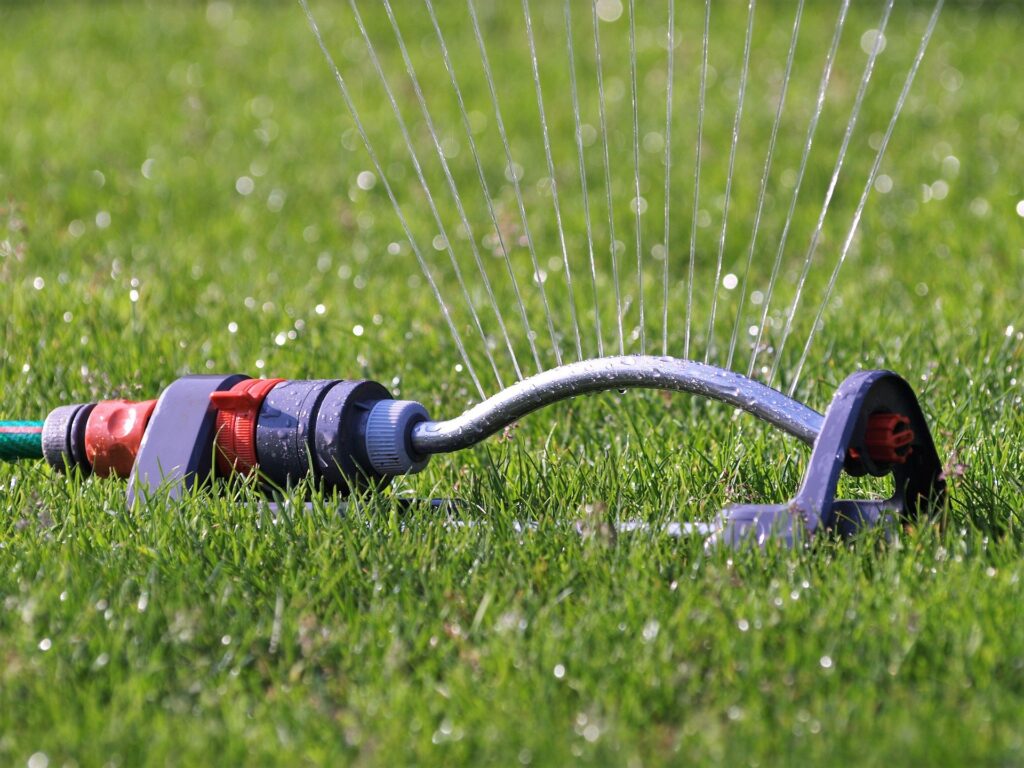You want to get a watering system for your yard but are overwhelmed by the many choices available. What is the best one for you? It all comes down to a simple matter of preferences and budget, but you need to be aware that there are advantages and disadvantages to every irrigation system. In addition, you will need to understand what the purpose of your garden water system is before you start the process of finding and getting the right one. Here are some of the different types of garden water systems and the uses, advantages, and disadvantages of each type.
Drip Irrigation
Drip irrigation is more or less exactly what it sounds like. Hoses are laid and deliver water directly to the roots of plants in intermittent bursts. Drip irrigation can be automatic or manual. There are many advantages to this type of garden water system. First of all, because there is little runoff and the roots are being fed directly, drip irrigation is the most water-saving option available, using anywhere from 30-50% less water than other methods. In addition, difficult soil types (such as sandy or rocky soil) can be easily penetrated. Finally, if you are a gardener whose plants have different water needs, drip irrigation systems can deliver different amounts of water to different areas of your garden.
There are a few disadvantages, however. With drip irrigation, the filters need periodic flushing to prevent clogging and mineral buildup. Improper installation of a drip system can result in poor root development and dieback. It is also easy to cause damage to the tubing if you are not careful when working in the yard with power tools. Tubing can also wear out more quickly if exposed to direct sunlight, yard traffic, and animal damage.
Spray Systems
An automated spray system is one of the most popular options when it comes to lawn and landscaping care. In fact, it was probably the type of water system your mind automatically went to when you read the title of this article. A spray sprinkler system allows you to water an area of the yard or garden in a short period of time with a high application rate. Because of their popularity, there are a variety of options, and most spray systems can be easily customized and upgraded to include soil moisture sensors, drip irrigation zones and rain shut off devices. The spray heads are adjustable for maximum coverage in all full circle, half-circle, or quarter-circle configurations.
If you have a sloped or steep incline in your yard, an automated spray system might not be ideal for you since they work best in flat terrain. They are also less effective in the distribution and penetration of water in certain soil types, such as thick clay or compacted sandy soils, which are better suited to slow drip irrigation and not the fast, forceful application of water via sprayers, which can result in runoff. In addition, leaky seals on the applicators are common with age and they can be easily damaged by lawnmowers.
Roter Systems
Roter systems are similar to spray systems, with the only appreciable difference being that they rotate the stream of water in a circle rather than being fixed. Roter systems are most often used for larger lawn areas of more than 18 square feet. They have several advantages over the more simple spray systems. Rotor systems are considered more effective in distributing water evenly and more precisely than spray head sprinklers. Their flexibility also allows them to be effective at watering odd-shaped areas, sloping lawns, turf with nonabsorbent soils. Roter systems do have one big disadvantage, however. If you experience low water pressure with your current outdoor watering method, a rotor system might not be effective for your situation since the jet stream-like distribution is dependent on higher water pressure than sprays.
No matter what garden water system you choose, you are going to need a plumber to help hook it up and install it. For more information on plumbers in your area, go to https://www.fixitrightplumbing.com.au/.

